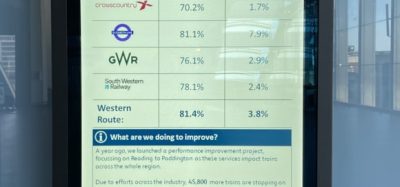RSSB to use artificial intelligence to help predict low adhesion track conditions
Posted: 2 February 2023 | Elliot Robinson (Editorial Assistant - Global Railway Review) | 2 comments
The UK’s Rail Safety and Standards Board are using AI in a research project to predict and identify where and when low adhesion is going to occur on the rail network.


The Rail Safety and Standards Board (RSSB) is collaborating with the University of Sheffield to develop a tool using artificial intelligence to help predict low adhesion track conditions.
The new research project is investigating how more detailed information on local conditions can be used to tackle the seasonal challenge associated with ‘leaves on the line’.
Low adhesion track conditions are a serious safety and operational issue for the rail industry, costing around £350 million each year. It not only causes delays affecting train performance but can also result in station overruns and signals being passed at danger.
Related content you will enjoy:
The research project
Temperature, humidity, and the presence of leaf layers or other contaminants all have an impact on the level of adhesion between the train wheel and the rail. The project will use artificial intelligence to analyse data, and high-resolution video footage to deliver more accurate predictions about friction at the wheel-rail interface. One of the project outputs will be an online tool, for users to enter data that will generate friction predictions for anywhere on the network, in time for Autumn 2023.
“While people may think of leaves on the line as a joke, or just an excuse used when a train is delayed, the reality is that it’s a very serious issue for the rail industry,” Paul Gray, Professional Lead Engineering for RSSB, said. “Low adhesion causes significant safety risks and operational problems, costing millions of pounds to manage. Our new research project will use artificial intelligence and data analysis to predict and identify where and when low adhesion is going to occur on the rail network. This will allow targeted action at these specific locations, to help manage the safety risks and reduce delays.”
“It is very exciting for the team at Sheffield and RSSB,” Roger Lewis, Professor of Mechanical Engineering for University of Sheffield, said. “Our fundamental analysis of the causes of low adhesion as well as our extensive collection of data from track is now coming together to enable the development of the AI friction prediction tool that will help the railway industry with performance and safety issues around Autumn.”
Related topics
Adverse Weather, Artificial Intelligence (AI), Infrastructure Developments, Safety, Technology & Software
Related organisations
Rail Safety and Standards Board (RSSB), University of Sheffield









That sounds really interesting to me. Is there further information available?
Hi Thomas – great that you find this topic interesting! You can certainly get in touch with the team at RSSB or the University of Sheffield; I’m sure they’ll help you with more information. You might also be interested in some other related published content on our website, found here: https://www.globalrailwayreview.com/topic/adverse-weather/